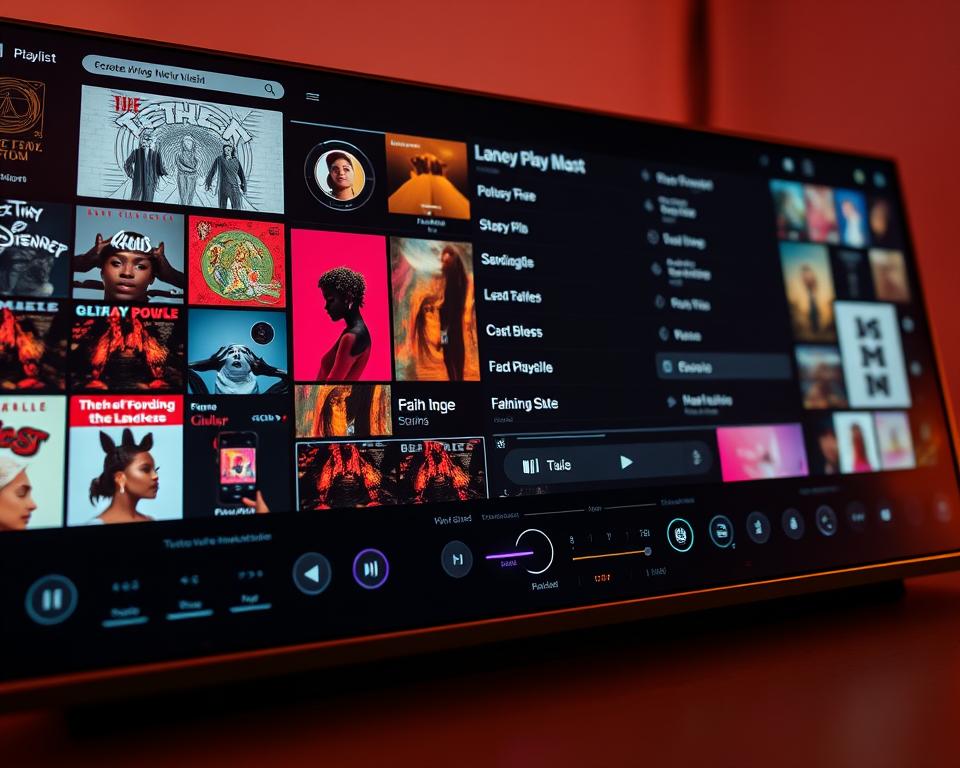Anuncios
Looking for a title that mixes playful design and fresh ideas? You found this guide to the best indie games because you want quick, useful picks that save you time and match your mood.
Why should you care now? Club 250 (Steam 250) mines over 125 million reviews to surface Top 250 lists, Hidden Gems, and weekly highlights. That player-driven data helps you spot what matters without slogging through ads.
In this short roundup you’ll get plain-English summaries, quick notes on replay value, soundtrack vibe, and control feel, plus where to play and what to check before buying. Use this list as a practical starting point, balance your play with the rest of your life, and pick games that suit your schedule.
Introduction: why the best indie games matter right now
If you only have a little tiempo, community-rated picks can point you to memorable short adventure experiences that fit your schedule.
Small teams around the world have turned tight budgets into creative advantages over the years. That pace means fresh mechanics, compact stories, and projects that ship sooner than larger titles. You’ll find experiments that feel personal and designs that focus on play rather than spectacle.
Anuncios
Count on crowdsourced signals like Steam 250’s Club 250, which aggregates 125 million reviews into Top 250 and Hidden Gems lists. Those rankings help people filter thousands of releases into a short list worth trying tonight.
How to use this roundup:
- Skim the short notes to match session length to your mood.
- Look for platform and performance tips before you install.
- Use community feedback to decide if a title fits a weekend binge or a nightly routine.
Best indie games: the 2025 roundup of fun, creativity, and staying power
These 2025 selections emphasize mechanics you can learn quickly and enjoy repeatedly. Below you’ll find a compact note for each pick so you can match a title to your available time and mood.
Rift of the NecroDancer
Core mechanic: rhythm-first dungeon runs with new rift modes.
Session feel: drop-in ten minutes or run an hour-long streak.
Replay hooks: varied tracks and patterns that push you to try one more run.
Rosewater
Core mechanic: point-and-click investigation with choice-driven scenes.
Session feel: short chapters you can finish in an evening.
Approachable feature: a strong voice cast that helps characters land quickly.
Peak
Core mechanic: physics-based climbing that rewards teamwork.
Session feel: quick rounds that get funnier with friends; works solo too.
Replay hooks: emergent moments from clumsy controls and timing.
Blue Prince
Core mechanic: puzzle-driven, shifting-room roguelike mansion building.
Session feel: one run a night fits well; runs change enough to teach new strategies.
Approachable feature: clear progression even when runs end early.
Bionic Bay
Core mechanic: biomechanical platformer with gravity flips and telekinesis.
Session feel: short retries speed teaching; challenge feels fair.
Replay hooks: trap learning and time tools that reward practice.
Pipistrello and the Cursed Yoyo
Core mechanic: retro platform-adventure using a yoyo for movement and combat.
Session feel: tight platformer segments that suit evening play.
Approachable feature: modern responsiveness under a GBA-style sheen; a catchy soundtrack keeps runs lively.
The Beekeeper’s Picnic
Core mechanic: cozy point-and-click mystery with gentle deduction.
Session feel: bite-sized scenes perfect for unwinding after work.
Approachable feature: a capable cast and warm writing help you stay engaged without stress.
“Across these picks, look for clear hooks—movement, mystery, or music—so you can match tonight’s play to your energy and available time.”
- Mechanics you can learn fast
- Sessions that fit real schedules
- Replay hooks that reward small improvements
- Notable voice cast where it helps story
- Patch-friendly titles with active studios
- Wishlist to track updates and discounts
- Movement-driven picks for flow
- Puzzle and lore for slow nights
- Co-op sims for shared laughs
Puzzle and adventure picks that reward curiosity
Approach these puzzle and adventure picks as short labs where you test ideas. Small experiments help you learn rules without getting frustrated.
How shifting-room puzzles keep runs fresh in Blue Prince
Blue Prince uses changing mansion layouts to keep each run surprising. Plan your route by finding rooms that form safe loops.
Treat every run as an experiment: try a new room sequence and note how traps and rewards reappear. A quick sketch or screenshot chain makes later decisions faster.
Following clues and characters in Rosewater without getting lost
Rosewater leans on voice lines and a journal system to nudge you forward. Listen for repeated dialogue; those shifts often point to the next person or place.
Use the in-game notebook or your own checklist to track leads when you only have a little time. Avoid spoiler-heavy guides early and favor high-level tips that show the way.
Consejo: Save five minutes at the end of a session to jot one next-step clue. That tiny habit slashes friction for your next play.
- Map safe loops to create repeatable routes.
- Test different sequences to learn mansion rules.
- Use journals or simple checklists to track clues.
- Step away if a puzzle stalls—short breaks help clarity.
Indie horror that pushes boundaries without big budgets
You don’t need a big budget to feel unsettled—many small studios craft rich horror with clever design and tight scripting.
Before you start, scan settings and community notes for jump-scare indicators and content warnings. Many roundups now list whether sudden scares appear, so you can plan your session and avoid surprises.

Reading the room: jump-scare indicators, tone, and pacing
Pace matters: keep sessions short to preserve tension instead of letting it wear you out. Take a quick break if a sequence feels too intense.
Pay attention to lighting cues, audio swells, and camera angles—these often signal an incoming scare so you can brace rather than be blindsided.
Finding community theories, lore, and fan analyses after you play
After you finish, visit community hubs to read lore threads and fan analyses. People often uncover clever details you missed on a first run.
“Fans love piecing together hidden clues; a quick dive into community posts can reveal new meanings and play approaches.”
- Skim content warnings to match your comfort level without spoiling story beats.
- Search for spoiler-light hints if a puzzle section stalls you.
- Use accessibility options like subtitles and brightness to make scenes clearer.
- Pick atmosphere-driven titles if you prefer dread over nonstop shocks.
For curated lists and notes on jump-scare presence, see a focused roundup that tracks those details of small horror titles. Respect your limits and stop when you need to—this is a cultural experience, not a test.
Platformers and movement toys: challenge, flow, and replay value
Movement-focused platformers reward small practice loops more than marathon sessions. You learn a forma to move through rooms, not memorize walls. That makes short sessions feel useful.
Bionic Bay’s precision: learning traps without losing momentum
Consejo: Practice one obstacle at a time. Chain a flip, a throw, and slow-time so each room becomes a clean sequence.
Quick retries mean you can make real progress in five-minute bursts. Calibrate controls early to avoid fights between your hands and the game.
Rhythm-platform hybrids: why Rift of the NecroDancer clicks for short sessions
Timing is your main resource. Aim for brief runs and swap rift modes until a track fits your tempo.
“Soundtrack variety helps your brain lock into timing; if a track fights you, change it and try again.”
Retro feels, modern control: Pipistrello’s yoyo movement loop
Pipistrello rewards deliberate inputs: swing, latch, recover. Use visual landmarks to count moves and turn tricky gaps into repeatable routes.
- Calibrate dead zones and button mapping early.
- End sessions after one clean success to stay motivated.
- Share clips with friends to learn new routes fast.
Where to play: versions, platforms, and finding hidden gems
Discovery starts with signal-reading: reviews, curated lists, and quick clips reveal what holds up. Use those signals to set realistic expectations for your platform and play style.
Steam review signals and “Top 250” lists as discovery tools
Steam 250 and Club 250 aggregate large review pools—about 125 million reviews—and surface Top 250, Hidden Gems, New This Week, and Trending lists. That makes them a fast filter when you want solid picks without digging through noise.
Consejo práctico: read a mix of positive and critical user reviews to see recurring praise and common issues before you buy. Club 250’s Weekly Edition email also sends a short list of movers each week if you prefer low-effort discovery.
Checking Nintendo Switch versions, performance notes, and updates
If you plan handheld play, scan the Nintendo Switch version notes for frame-rate targets, resolution modes, and recent patches. A single update can fix a major issue, so patch history matters.
Look for developer posts on forums or social media; teams often share tips like toggling effects to keep performance smooth. Also check download size and free space on your console so installs don’t stall mid-way.
“Wishlist titles to get sale and patch alerts, and watch short gameplay clips to see real pacing and UI in action.”
- Use Steam Top 250/Hidden Gems as a starting filter.
- Subscribe to Club 250’s Weekly Edition for low-effort finds.
- Compare features across storefront pages for each version.
- Check patch notes, developer tips, and required storage space.
Smart ways to play: guides, balance, connect, and insights
Treat each play session like a small experiment: one focused goal beats unfocused hours.
Set session goals and tune difficulty to your time and mood
Pick one target—finish a level, learn a boss pattern, or claim a quest step. That keeps progress steady even when your week is busy.
Use difficulty sliders or assist options to match your energy. Changing settings is a valid way to keep play fun and fit your life.
Set a soft timer so you can stop at a natural break. You’ll return refreshed and more likely to stick with a title long term.
Join communities to trade tips, avoid spoilers, and discover new things
Find a small Discord or subreddit where people share kind, focused help. Fan groups often give kinder advice than broad feeds.
Use spoiler tags and content warnings when posting. That shows respect and keeps threads welcoming for people discovering a story for the first time.
- Tell co-op partners if you want a “learning run” or “no spoilers.”
- Ask for a nudge, not full solutions—hints preserve discovery.
- Subscribe to a weekly roundup like Club 250’s Weekly Edition to surface new picks without doomscrolling.
“Guides are tools, not rules—learn systems, then experiment on your own for the most satisfying wins.”
Conclusión
Close each play session on purpose so your next return feels fresh and fun.
You now have a focused list of the best indie games to explore and the tools to pick a single title for tonight. Use Steam Top 250 and Club 250’s Weekly Edition to keep discovery low-effort.
Match mood to genre: choose a calm puzzle or adventure when you want rest, reach for tension if you want horror, or pick a quick sim or movement run for short skill loops.
Before buying on Nintendo Switch, read version notes and recent patches so handheld performance meets your expectations. Respect limits and balance play with real-life needs.
If you need help with accessibility, purchases, or screen-time, consult qualified pros. Share what you love with friends and enjoy one great moment at a time.



